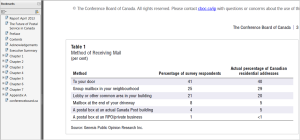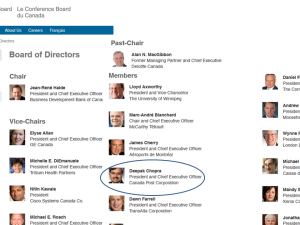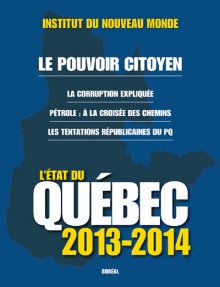Below is and excerpt from a blogpost on the Programmable City website. I work there now, and post quite a bit of open data, big data, data infrastructure posts there. Most do not include any CanCon so I do not always put them here. The Open Government Partnership is big for the Federal Government in Canada, and the OGP Independant Reporting Mechanism report by the Independant Reviewer Dr. Mary Francoli, was not particularly kind to our Action Plan, and rightly so. The OGP is however not that big a deal on the ground or with civil society in Canada. It is however really important elsewhere, in Ireland for example, the EU and the OGP are leveraged as a way to bring and promote progressive practices, regulation, laws, and so on. In developing countries, it is a way for civil society organizations to have a voice and meet officials they would otherwise not get to interact with at home, and again have a transnational organization promote change.
I will try and post here more often! Took me time to adjust to my new home. Rest assured though, that I have not forgotten you nor do I not pay attention to the data shenanigans ongoing in Canada!
********************************
I attended the European Regional Meeting of the Open Government Partnership at the Dublin Castle Conference Centre in May of this year. The meeting was a place for performance and evaluation wonks to show their wares, especially at the following sessions: Open Government Standards and Indicators for Measuring Progress, The EU’s Role in Promoting Transparency and Accountability and Engagement with the OGP, and Open Contracting: Towards a New Global Norm. I did not attend the Independent Reporting Mechanism (IRM) sessions, but having read the IRM report for Canada, I know that it too is an emerging performance evaluation indicator space, which is affirmed by a cursory examination of the IRMs two major databases. The most promising, yet the most disappointing session was the Economic Impact of Open Data session. This is unfortunate as there are now a number of models by which the values of sharing, disseminating and curating data have been measured. It would have been great to have heard either a critical analysis or a review of the newly released Ordinance Survey of Ireland report, Assessment of the Economic Value of the Geospatial Information Industry in Ireland, the many economic impact models listed here in the World Bank Toolkit, or the often cited McKinsey Global Institute Open data: Unlocking innovation and performance with liquid information report. Oh Well!
While there I was struck by the number of times maps were displayed. The mapping of public policy issues related to openness seems to have become a normalized communication method to show how countries fare according to a number of indicators that aim to measure how transparent, prone to corruption, engagemed civil society is, or how open in terms of data, open in terms of information, and open in terms of government nation states are.
What the maps show is how jurisdictionally bound up policy, law and regulatory matters concerning data are. The maps reveal how techno-political processes are sociospatial practices and how these sociospatial matters are delineated by territorial boundaries. What is less obvious, are the narratives about how the particularities of the spatial relations within these territories shape how the same policies, laws and regulation are differentially enacted.
Below are 10 world maps which depict a wide range of indicators and sub-indicators, indices, scorecards, and standards. Some simply show if a country is a member of an institution or is a signatory to an international agreement. Most are interactive except for one, they all provide links to reports and methodologies, some more extensive than others. Some of the maps are a call to action; others are created to solicit input from the crowd, while most are created to demonstrate how countries fare against each other according to their schemes. One map is a discovery map to a large number of indicators found in an indicator portal while another shows the breadth of civil society participation. These maps are created in a variety of customized systems while three rely on third party platforms such as Google Maps or Open Street Maps. They are published by a variety of organizations such as transnational institutions, well resourced think tanks or civil society organizations.
We do not know the impact these maps have on the minds of the decision makers for whom they are aimed, but I do know that these are often shown as backdrops to discussions at international meetings such as the OGP to make a point about who is and is not in an open and transparent club. They are therefore political tools, used to do discursive work. They do not simply represent the open data landscape, but actively help (re)produce it. As such, they demand further scrutiny as to the data assemblage surrounding them (amalgams of systems of thought, forms of knowledge, finance, political economies, governmentalities and legalities, materialities and infrastructures, practices, organisations and institutions, subjectivities and communities, places, and marketplaces), the instrumental rationality underpinning them, and the power/knowledge exercised through them.
This is work that we are presently conducting on the Programmable City project, which will complement a critical study concerning city data, indicators, benchmarking and dashboards, and we’ll return to them in future blog posts.
1. The Transparency International Corruption by Country / Territory Map

Users land on a blank blue world map of countries delineated by a thick white line, from which they select a country of interest. Once selected a series of indicators and indices such as the ‘Corruption measurement tools’, ‘Measuring transparency’ and ‘Other governance and development indicators’ appear. These are measured according rankings to a given n, scored as a percentage and whether or not the country is a signatory to a convention and if it is enforced. The numbers are derived from national statistics and surveys. The indicators are:
- Corruption Perceptions Index (2013), Transparency International
- Control of Corruption (2010), World Bank dimension of Worldwide Governance Indicators
- The Bribe Payer’s Index (2011), Transparency International
- Global Corruption Barometer (2013), Transparency International
- OECD Anti-Bribery Convention (2011)
- Financial Secrecy Index (2011), Tax Justice Network
- Open Budget Index (2010), International Budget Partnership
- Global Competitiveness Index (2012-2013), World Economic Forum Global Competitiveness Index
- Judicial Independence (2011-2012), World Economic Forum Global Competitiveness Index
- Human Development Index (2011), United Nations
- Rule of Law (2010), World Bank dimension of Worldwide Governance Indicators
- Press Freedom Index (2011-2012) Reporters Without Borders
- Voice & Accountability (2010), World Bank dimension of Worldwide Governance Indicators
By clicking on the question mark beside the indicators, a pop up window with some basic metadata appears. The window describes what is being measured and points to its source.

The page includes links to related reports, and a comments section where numerous and colourful opinions are provided!
*****************************
View the rest at Programmable City.



Comments on Posts